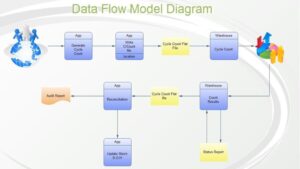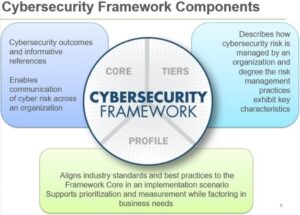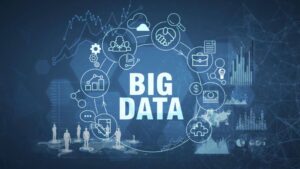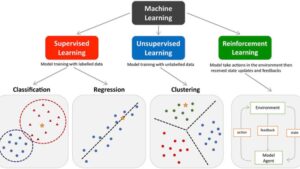Cyber threats pose a challenge to advancement in businesses, and this is the reason why they need to seek newer, brighter ways of ensuring security. That’s where cloud telemetry comes in; it keeps collecting, constantly analyzing, and processing data from Primary Benefit of Cloud Telemetry Sources in Cybersecurity environments for the purpose of detecting the security risks in real time.
What Is Cloud Telemetry?
Cloud telemetry consists of the collection of logs, metrics, and traces from a Primary Benefit of Cloud Telemetry Sources in Cybersecurity systems. It allows the whole view of activity taking place into and out of the network, which gives a high-value window, showing how security teams will identify malicious threats before they happen.
Relevance of Cloud Telemetry to Today’s Cybersecurity
Since the organization is now entirely cloud-based, it just cannot depend on traditional monitoring. Primary Benefit of Cloud Telemetry Sources in Cybersecurity: Telemetry improves visibility to help reach the point of quick threat detection, response with automation, and improved security policies.
Why Knowing the Main Advantage Is Important
The most important thing for cloud telemetry is the ability of real-time threats. Cybercriminals don’t wait. Hence, security officials shouldn’t wait too. Such organizations would use cloud telemetry to quickly identify threats and act before it’s too late.
Stay tuned with us to find out how the Primary Benefit of Cloud Telemetry Sources in Cybersecurity telemetry makes the efforts of cybersecurity more effective and why it is a groundbreaking revolution for corporations worldwide.
Understanding Cloud Telemetry Sources
In the fight against modern cybercrime, the essence of cloud telemetry is throw-in-the-dark continuous visibility into Primary Benefit of Cloud Telemetry Sources in Cybersecurity systems. It allows for faster tracking of activities, anomalous behavior detection, and response to security attacks within organizations. Exploring definitions, components, types of data, and means of collection sheds light on its impact.
Definition and Core Components
Cloud telemetry refers to the collection of data in an automatic manner from systems, applications, and networks based on the Primary Benefit of Cloud Telemetry Sources in Cybersecurity. This collection covers any real-time information about a system in terms of performance, security events, and user activity.
An overview of the core components of cloud telemetry is as follows:
- Data Sources – Telemetry data originates from cloud platforms, applications, and network devices.
- Collection Mechanisms – APIs, agents, and monitoring tools that collect the telemetry data.
- Storage & Processing – Telemetry data analysis can be carried out on cloud or on-premises databases.
- Visualization & Alerts- Most often use dashboards and security tools that present the results and raise alerts.
With these components functioning in tandem, organizations can detect security threats to computer systems, monitor the health of these systems, and maintain compliance.
Types of Cloud Telemetry Data (Logs, Metrics, Traces)
Having the above components defined, the cloud Primary Benefit of Cloud Telemetry Sources in Cybersecurity data itself could be broken down into three different categories, each supporting certain individual cybersecurity aspects:
- Logs- These contain events, actions, and changes made to the system. They are used to carry out an investigation on incidents or to be used to track unauthorized access.
- Metrics- Basically numerical information such as CPU usage, networking metrics, response time, etc. These metrics help in detecting both performance problems and security threats.
- Traces- The full workflow-level tracing of requests and user activity across cloud systems. Traces work wonderfully in identifying weaknesses and optimizing application performance.
Hence, by carefully analyzing these classes of data, the organization can see unusual behavior, raise alerts on probable cyber threats, and keep an eye on almost all aspects of cloud security.
Telemetry Data Collection and Processing
These methods of telemetry data collection provide different ways to ensure maximum visibility over all aspects of cloud environments. This is what happens;
- Agents and APIs are lightweight software agents that will extract data from cloud services and applications through API integration.
- In streaming, data is processed in real-time, while in batch processing, data is stored and analyzed at a later time.
- Centralized storage is provided by the Primary Benefit of Cloud Telemetry Sources in Cybersecurity data storage in cloud-native platforms such as AWS CloudWatch, Google Cloud Operations, and Azure Monitor.
- Machine learning algorithms in sophisticated security tools act on telemetry data to identify patterns, anomalies, and possible cyber threats.
Ingestion of the telemetry data creates a great opportunity for enterprises to act best in the prevention of attack incidents, optimization of system performance, and enhancing the security factors protecting the cloud.
The Primary Benefit of Cloud Telemetry in Cybersecurity
Without a doubt, speed and visibility command the entire cybersecurity universe of today. Cyberattacks come and go in real time; therefore, being able to provide an organization with quick insights about breaches or malicious activity so that damage can be limited as much as possible is crucial. In terms of cloud telemetry, this is where it has its biggest advantage:
real-time threat detection, enhanced visibility, and automated security processes.
Simply put, the Primary Benefit of Cloud Telemetry Sources in Cybersecurity can be further analyzed in terms of improving security and keeping businesses a step ahead of exposure.
Real-Time Threat Detection and Response
Unlike traditional security methods, where system checkups are done periodically, threats could escape detection for hours and even days. Real-time collection and analysis of security data is the unique contribution of cloud telemetry.
- Immediate Anomaly Detection – Primary Benefit of Cloud Telemetry Sources in Cybersecurity detects anomalous patterns, such as sudden spikes in traffic, perhaps an attempted unauthorized access, or a peculiar transfer of data.
- Timely Incident Response – The alert is immediate, so that a swift response could be arranged to counter any escalation of the attack.
- Reduced Impact of Attack – An organization can contain breaches and prevent them from spreading as threats are detected while they are happening.
Suppose a hacker gets unauthorized access to a cloud server. In that case, the cloud Primary Benefit of Cloud Telemetry Sources in Cybersecurity will alert security teams to unusual behavior at the login and possibly block access before any data is compromised.
Improved Visibility Across Cloud Environments
One of the main challenges regarding cloud security is that it is highly invisible. It becomes hard to monitor all at the same time since workloads are distributed across many different cloud platforms. Cloud telemetry is the one that addresses this problem by providing complete visibility to all cloud activity.
It to Track All Events – Every login, every transfer of data, every system change is stored in a record to lessen the blind spots.
Monitoring Multi-Cloud and Hybrid Setups – Never again must they configure a view of all possible combinations for their analysis over multi-cloud or hybrid cloud environments, including using different providers such as AWS, Google Cloud, and Azure.
Proactive Threat Hunting- Security analysts use Primary Benefit of Cloud Telemetry Sources in Cybersecurity as a critical tool in investigating threats and possible threat scenarios before any damage is done, as opposed to waiting for alerts to do so.
Improved visibility, along with cloud telemetry, helps organizations to unearth hidden vulnerabilities, defend against insider threats, and improve compliance with security laws.
Automating Security Processes to More Quickly Tackle an Incident
While cyber threats move very quickly, human responses to them are too slow. Automation through the application of cloud telemetry enables organizations to reply instantly, without human intervention.
Automated Threat Responses – If an unusual activity is detected by Primary Benefit of Cloud Telemetry Sources in Cybersecurity, automatic security actions can be activated, such as:
- Blocking suspicious IP addresses
- Locking compromised user accounts
- Isolating infected cloud instances
Reduced Security Load – No longer do analysts have to go through all that much manual review of logs to find threats; telemetry does the hard part.
Self-Repairing Systems- Some advanced telemetry setups will automatically patch vulnerabilities or restore infected systems.
For example, detection of a malware attack results in an automated reaction, quarantine of all infected files, and network access blocking in a matter of seconds without human intervention.
Cloud telemetry has become an imperative since it prepares organizations with speed, visibility, and automation to deal with the full-scale native attacks in the present cyber world. Cybersecurity transcends the reactive process into a proactive activity centered on the identification, analysis, and neutralization of threats even before they can do any consequential damage.
In the next section, we will analyze how cloud Primary Benefit of Cloud Telemetry Sources in Cybersecurity fortifies an organization’s cybersecurity posture and the necessity of such further long-term protection.
How Cloud Telemetry Strengthens Cybersecurity Posture
With cybersecurity, being proactive means getting geared up for the prediction, prevention, detection, and response to threats. But the foremost thing about cloud telemetry is that it actually becomes risk management proactively, compliance increases, and false positives decrease.
To strengthen this point, let’s investigate some of the areas in which cloud telemetry empowers an organization’s overall security strategy.
This includes proactive risk management and threat intelligence
Traditional cybersecurity paradigms have always held a reactive treatment of security. It responds to problems only when a breach or an attack has occurred. Cloud telemetry turns the attention toward collecting potential threats before an attack reaches full scale.
- Continuous Threat Monitoring – Primary Benefit of Cloud Telemetry Sources in Cybersecurity data tracks all unusual behavior over a 24/7 cloud network, so that during its early stages, the development of risk can be detected by the security teams.
- Integrated threat intelligence – Cloud telemetry feeds the AI-driven security engines that analyze the patterns of an attack, predict future threats, and recommend ways of prevention.
- Early Risk Detection – By understanding past incidents in relation to current real-time data, the organization is able to close up vulnerabilities that would otherwise have allowed malicious activities to run without restrictions.
For instance, if telemetry detects a failed login attempt coming from a known malicious IP address, then it may trigger a corresponding automatic blocking before the assailant surfaces.
Compliance Improvement and Regulatory Adherence
These laws often require that organizations use strict data protection regulations such as GDPR, CCPA, and HIPAA to enforce compliance in the environments where they hold their data. It provides a wealth of logs specifying security audits per activity, automated reporting, and real-time monitoring that are possible with cloud telemetry.
- Audit-Ready Logs – Cloud Primary Benefit of Cloud Telemetry Sources in Cybersecurity records all security events, so businesses have easy access to proving compliance at audit time.
- Policy Enforcement – Duplication of existing security policies is automated by monitoring for access control, data encryption, etc.
- Incident Documentation: Where events have occurred that constitute a breach, cloud telemetry would have preserved sufficient forensic data for examining the incident and informing future prevention decisions.
For instance, a healthcare facility using cloud telemetry can know who accessed patient records and report that for compliance with the privacy rules under HIPAA.
Reducing false positives and alert fatigue
Tiredness due to hundreds of alerts generally generated by the security systems is something that becomes a well-known predicament for a security team. This makes it difficult for the team to pick the real threats. Cloud telemetry cuts these down and improves accuracy while maximizing attention on really consequential events.
- “Smarter Alert Prioritization” – Telemetry tools proactively analyze events in real time and automatically filter those that are low-risk so security teams can focus on real threats.
- AI-Powered Detection of Threats – Telemetry data is collated using machine learning models to create a threshold of normal human behavior in activity and determine if an event was an attack.
- Contextual Insights – Telemetry describes the reason for a trigger and the seriousness of it, instead of flooding the teams with raw data.
For example, let’s say a user logs in from a new location; traditional systems would likely interpret this to be a risk. Cloud telemetry goes further by analyzing other factors like device type and previous logins before determining whether the alert might be a true invalid.
With cloud telemetry, cybersecurity is changing from a reactive to a proactive nature. Earlier detection of risks, meeting compliance standards, and reducing alert fatigue will be possible in organisations. These bring a plethora of Primary benefits of Cloud Telemetry Sources in Cybersecurity to businesses: through this exchange, one will increase efficiency in security, protect sensitive information, and improve the efficacy of an organization’s overall cybersecurity posture.
The following comes proof of it as the next segment, featuring real-life examples of cloud telemetry use cases in cybersecurity and how much leading businesses have benefited and grown.
Challenges and Limitations of Cloud Telemetry
Despite the fundamental advances in cybersecurity afforded by cloud telemetry, it is not without issues. To derive its full value from it, organizations must go through data overload, privacy threats, and integration complexities, among myriad other problems.
Let’s look at some of the major constraints organizations face and potential solutions.
Massive Volumes of Telemetry Data and Storage Management
The cloud telemetry generates an extensive volume of Primary Benefit of Cloud Telemetry Sources in Cybersecurity data, including logs, metrics, and traces from numerous sources. Although they provide valuable information or knowledge, they contribute to storage issues, performance issues, and cost burden.
- High Volume Telemetry Data – Large enterprises emit terabytes of telemetry data on a daily basis. Therefore, processing and analysing it instantly becomes a big problem.
- Storage Costs – Storing high volumes of telemetry data in the cloud can be expensive, especially for businesses that operate in a multi-cloud environment.
- Data Noise and Relevance – Not all Primary benefits of Cloud Telemetry Sources in Cybersecurity data is useful for everyone. It can become harder to find true-seeking security threats due to unfiltered logs and redundant data.
How to Overcome It?
- Automated filtering and sanitizing of needless data so that the focus can be on critical security events.
- Evolutions in tiered storage: high access for the most important data and archiving for irrelevant data.
- Putting high volumes of data through AI-driven analytics so that one can do it with security teams and with minimal effort.
Privacy Issues and Compliance Risks
Collectively, the user activity, system configuration, and network traffic Primary Benefit of Cloud Telemetry Sources in Cybersecurity, present a serious issue for sensitive data. Unhandled, they promise to engender a lot of privacy violations and regulatory compliance issues while bringing attention from the regulatory bodies.
- Sensitive Data Exposure – Telemetry logs may hold personally identifiable information (PII), financial records, or confidential business data, which arouses privacy risks.
- Regulatory Hurdles – The procurers will have to comply with GDPR, CCPA, HIPAA, and other laws governing the requirements of data security.
- Cross-Border Data Transfers – Majorly cloud services are in several operational areas, complicating things with respect to data sovereignty and jurisdiction.
How to Overcome It?
- Masking sensitive data by using data anonymization before storing telemetry loggings.
- Applying role-based access control (RBAC), which will limit user access on the basis of the security clearance needed to access telemetry data.
- Choose cloud providers who offer built-in security and regulatory compliance features to ensure that the solution meets required compliance.
Integration Problems with Other Security Tools
Most of the time, companies already have SIEMs, endpoint detection, and even a firewall solution. But to integrate those existing tools’ outputs with cloud Primary Benefit of Cloud Telemetry Sources in Cybersecurity can be a complex, tedious process.
- Compatibility Problems- Different cloud providers adopt different proprietary logging formats that pose obstacles for the telemetry data merge within conventional security tools.
- Multiple Data Sources- The firms which have multi-cloud environments (AWS, Azure, Google Cloud) find it harder to standardize their telemetry data across platforms.
- Scarcity of Manpower- Most of the IT teams are devoid of knowledge in cloud-native telemetry, and, hence, integration and management seem quite laborious.
What is the solution?
- Encourage the usage of an open-source telemetry standard such as OpenTelemetry to ensure cross-cloud platform compatibility.
- Deploy cloud security training in the IT teams so that they can effectively manage and integrate telemetry solutions.
- Utilize SIEM and SOAR platforms that adhere to multi-cloud telemetry ingestion.
Telemetries from the clouds enable huge security visibility; yet the business requires overcoming various challenges such as an abundance of data, privacy issues, and complexities associated with integrating the same across several infrastructures to harness it. An organization can make cloud telemetry one of the important pillars in their strategy of cybersecurity by optimizing data collection, ensuring compliance, and using open-source standards.
In the next chapter, we will discuss some real cases of companies effectively implementing this technology to avert cyber attacks.
Best Practices for Leveraging Cloud Telemetry in Cybersecurity
For maximum Primary Benefit of Cloud Telemetry Sources in Cybersecurity from cloud telemetry, organizations must collect the right data-analyze it using AI-and implement real-time monitoring strategies. If meticulously applied, cloud telemetry can greatly improve the detection of threats while reducing response times. It can also contribute to the improvement of cybersecurity resiliency.
Given below are the best practices to ensure organizations maximize their returns with cloud telemetry.
Selection of Suitable Telemetry Sources
Not all telemetry is useful. Too much irrelevant data may hold back the analytical process and inflate storage costs. Essentially, prioritize the most valuable Primary Benefit of Cloud Telemetry Sources in Cybersecurity sources that can yield actionable security insights.
Prioritize Security-Critical Data – This should include logs, metrics, and traces that bear on cybersecurity, such as:
- Network Traffic Logs (inbound and outbound connection monitoring)
- Authentication Logs (login attempts and access failures
- System Performance Metrics (any spikes in resource utilization)
Mixed-Cloud and Hybrid Telemetry should be used – Using the AWS, Azure, Google Cloud, and on-premises systems, visibility across all cloud environments.
Ensure no Data Silos exist – Centrally stored telemetry data on a Security Information and Event Management (SIEM) system or cloud security platform provides easy access for analysis.
Best Practice
Implement OpenTelemetry to collect Primary Benefit of Cloud Telemetry Sources in Cybersecurity in an industry-standard practice across divergent cloud providers.
AI and ML Implemented for Advanced Analysis
With millions of logs created a day, manual analysis is impractical. AI and ML automate the following to facilitate threat detection, detect patterns, and predict attacks before they happen:
Anomaly Detection – AI detects anomalous behaviors in real time, such as:
- Sudden spikes in failed login attempts.
- Unexpected transfer of data to unknown locations.
- Unusual usage of cloud resources that may signal an attack.
Threat Intelligence Integration – The insight from machine learning models comparing Primary Benefit of Cloud Telemetry Sources in Cybersecurity data with known attack patterns helps in early identification of emerging threats.
Automate Security Action – It can do things such as:
- Automatically block suspicious IP
- Quarantine the infected cloud instances
- Only alert for high-risk threats so as to reduce false positives
Best Practice
Apply AI-powered security analytics such as Microsoft Sentinel, Splunk, and Google Chronicle to improve telemetry data processing.
Continuous Monitoring and Incident Response Strategies
Real-time monitoring is vital for early threat detection and fast response; otherwise, the safety incident response plan should allow security teams to act immediately when a breach is suspected.
- Continuous Monitoring Services- Cloud-native security tools should be put in place that would automatically follow the activity in the cloud.
- Set Up Alerts That Are Intelligent – Set alerts to prioritize high-risk incidents so that teams do not get tired of receiving so many alerts; real threats, however, will not be neglected.
- Formulate a Rapid Incident Response Plan – Pre-defined actions should be set into place, such as the immediate isolation of compromised systems, forensic analysis of Primary Benefit of Cloud Telemetry Sources in Cybersecurity logs to determine from where the attack came, and rollback into a safe system state should the attack go forth.
Best Practice – Security exercises should be regularly held to test the plans for response to real-life threats.
With the right telemetry sources, AI for analysis, and continuous monitoring, organizations can build up a proactive defense against cyber threats. Cloud telemetry is not only about data collection; it is about creating real-time security intelligence to reinforce, speed up, and make more robust cybersecurity defenses.
In the other chapters that follow, we would review some case studies with real-life implementations of businesses deploying cyber Primary Benefit of Cloud Telemetry Sources in Cybersecurity for the effective prevention of cyberattacks.
Conclusion and Future of Cloud Telemetry in Cybersecurity
The Additional Primary Benefit of Cloud Telemetry Sources in Cybersecurity Cloud is the Key to Modern Cybersecurity today: the real-time detection of threats, visibility into security automation, and everything else it can deliver to bolster defensive security. This fact, along with the right Primary Benefit of Cloud Telemetry Sources in Cybersecurity sources, AI-driven analytics, as well as continuous monitoring, makes it possible for organizations to proactively manage cyber risks …
Emerging hotter trends, such as AI-influenced forecasts for security, automated responses to threats, and greater complementary preparation for zero-trust architectures, will strengthen cloud telemetry in terms of cybersecurity. Just as more advanced forms of cyber threats emerge, so will the need for businesses to adopt adaptive security models based on real-time data insights, machine learning, and proactive risk management.
In other words, cloud telemetry is not just data accumulation; rather, it is the necessary transformation of raw data into directly exploitable actionable intelligence that assists security teams in staying ahead of attackers, making sure of compliance, and protection of critical assets. The organizations that embrace best practices and technologies will be better positioned for an ever-confident future of cloud security.

Ahsan Ali is a technology blogger and the founder of Techzivo.com, a platform dedicated to delivering insightful and practical content for tech enthusiasts.He currently focuses on creating in-depth articles around cybersecurity, aiming to help readers stay safe and informed in the digital world. With a passion for emerging technologies, Ahsan plans to expand Techzivo’s coverage into other technology micro-niches such as AI, cloud computing, and digital privacy, offering valuable insights for a broader tech-savvy audience.





